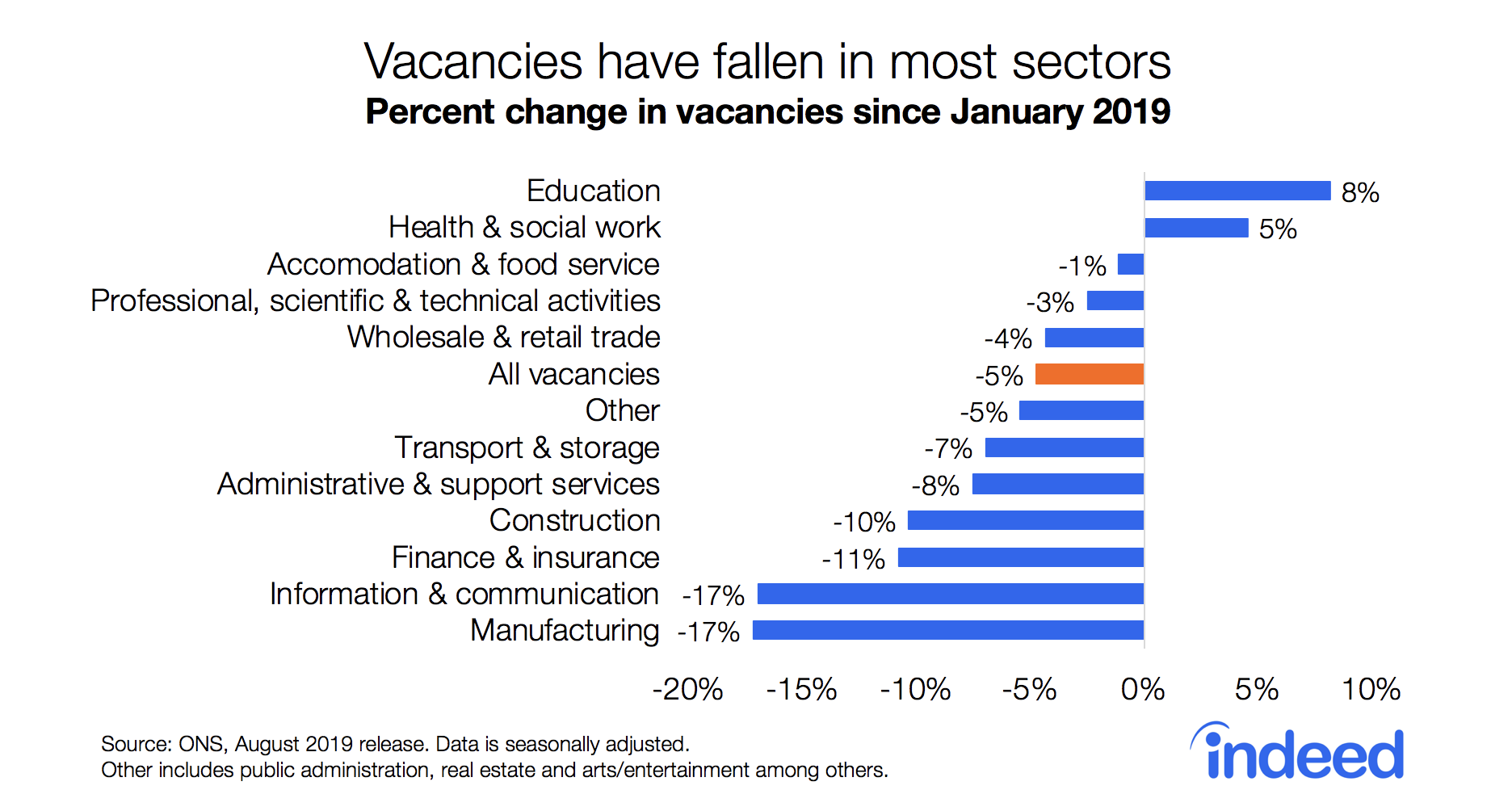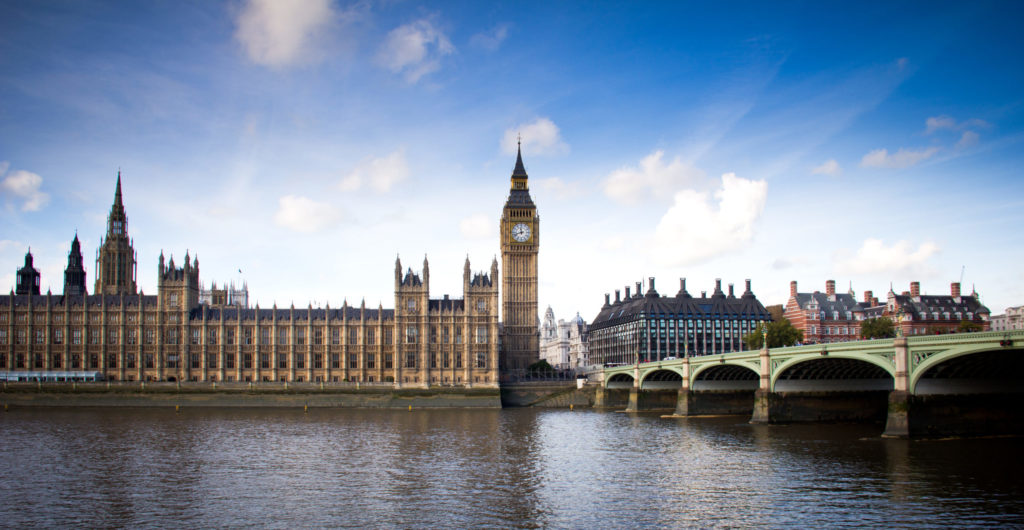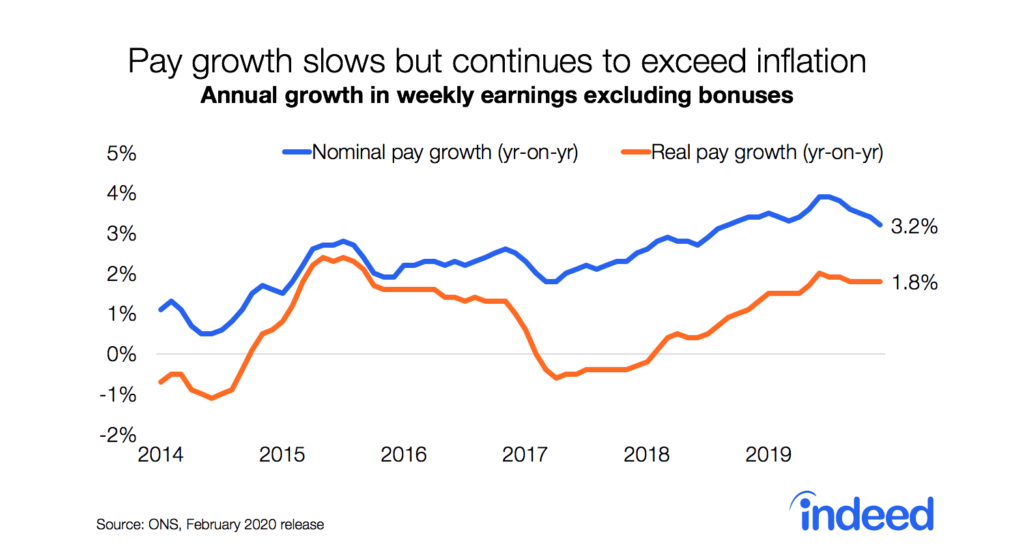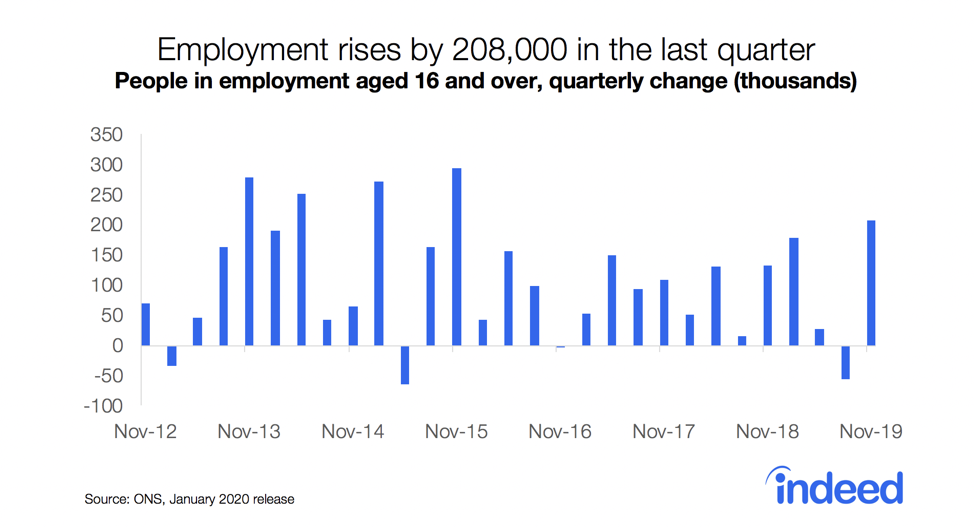A far from perfect picture of the UK labour market emerges from the latest ONS figures. On the one hand, good signs abound: despite economic contraction in the second quarter of the year — for the first time since 2012 — employment was actually up by 115,000 compared with the first quarter. Another positive is that employers still appear willing to hire, with an estimated 820,000 vacancies. Then there is the combination of high employment and continued demand for staff, which is probably one of the reasons why average wages are rising at their fastest rate for more than a decade. This is certainly good news for workers.
However, there are also a few warning signs. The total number of vacancies continues to slide further from the peak of 861,000 it reached at the start of 2019, suggesting some employers are holding off on hiring. Our analysis shows that total vacancies have fallen in all but two major sectors — education and health and social work.
Overall, this is a decent jobs report but prudence is warranted. Employer caution is limiting the supply of vacancies, yet stiff competition for recruits is still driving up wages and increasing costs for businesses. Given the wider slowdown in the economy and Brexit risks, the labour market has been holding up surprisingly well. But continued falls in vacancies suggest employers are mindful of the broader economic and political risks on the horizon.






